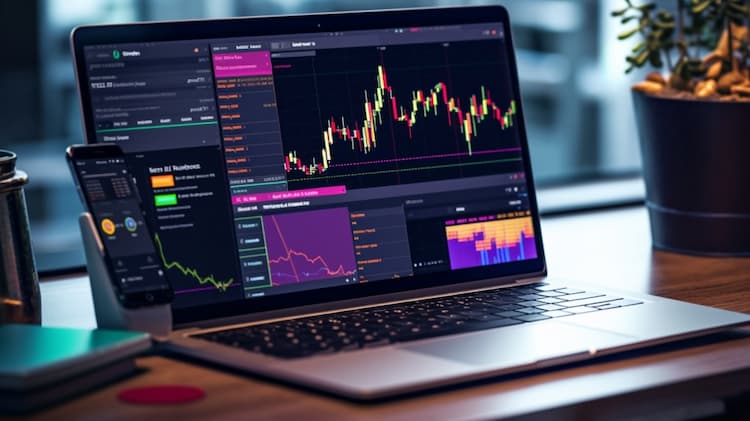
IVV VS VEA
Exchange-Traded Funds (ETFs) have revolutionized the investment landscape by providing investors with convenient access to diversified portfolios across various sectors and asset classes. In this article, we will conduct an in-depth comparison between two prominent ETFs: IVV (iShares Core S&P 500 ETF) and VEA (Vanguard FTSE Developed Markets ETF). We'll delve into crucial aspects such as ETF tickers, full names, issuers, sectors, top holdings, capitalization, investment strategies, tracking methods, and exposure.
IVV & VEA: Overview
IVV and VEA are two ETFs that cater to different segments of the global equity market. IVV is designed to track the performance of the S&P 500 index, which includes the largest publicly traded companies in the United States. On the other hand, VEA provides exposure to developed international markets outside the U.S. This fundamental difference in focus shapes their investment characteristics and risk profiles.
IVV & VEA: Sectors and Top Holdings
The iShares Core S&P 500 ETF (IVV) is invested in a broad range of sectors, including technology, healthcare, finance, and consumer goods. Its top holdings comprise influential companies like Apple, Microsoft, Amazon, and Alphabet. In contrast, the Vanguard FTSE Developed Markets ETF (VEA) offers exposure to sectors such as financials, industrials, consumer discretionary, and more, with top holdings like Nestle, Samsung, and Toyota. Understanding the sectors and top holdings of each ETF is essential for aligning investment goals with the right fund.
 IVV overlap IVV VS VEA
IVV overlap IVV VS VEA
IVV & VEA: Capitalization and Investment Strategy
IVV boasts a substantial asset under management (AUM), reflecting its popularity as a core investment choice for gaining exposure to the U.S. equity market. VEA, on the other hand, focuses on international developed markets and aims to provide investors with diversified exposure beyond U.S. borders. Their distinct capitalization and investment strategies provide investors with options to tailor their portfolios to their risk preferences and geographic preferences.
IVV & VEA: Tracking Methods and Exposure
IVV employs a full-replication strategy, where it aims to replicate the performance of the S&P 500 index by holding all or most of its components. This method ensures close tracking to the index's movements. VEA, on the other hand, uses a sampling approach, holding a subset of securities from the FTSE Developed All Cap ex US Index. This method allows VEA to represent the broader market while reducing costs. Understanding these tracking methods is crucial for evaluating how closely the ETFs follow their respective indices.
Conclusion
IVV and VEA are distinct ETFs that cater to different investment objectives. IVV provides exposure to the U.S. equity market's biggest players and is often considered a cornerstone investment for many portfolios. On the other hand, VEA offers investors an opportunity to diversify their portfolios by gaining exposure to developed international markets. Both ETFs have their strengths and are suitable for different investment strategies.
For investors seeking a deeper understanding of these ETFs' holdings, correlations, overlaps, and other insights, a valuable tool is ETF Insider. This user-friendly app allows investors to explore intricate details about these and other financial instruments, enabling them to make informed investment decisions.
Disclaimer: This article is intended for informational purposes only and does not provide investment advisory services. It is essential to conduct thorough research and consider professional advice before making any investment decisions.
Sources:
https://investor.vanguard.com/ VEA ETF issuer
https://investor.vanguard.com/investment-products/etfs/profile/vea VEA ETF official page
IVV quote and analysis
Discover the top holdings, correlations, and overlaps of ETFs using our visualization tool.
Our app allows you to build and track your portfolio.
To learn more about the IVV iShares Core S&P 500 ETF, access our dedicated page now.
FAQ
Why is IVV better than VEA?
IVV may be considered better than VEA for some investors due to its specific focus, offering diversification.
Does VEA beat IVV?
VEA's performance relative to IVV will vary over time, depending on market conditions.
Should I invest in IVV or VEA?
The choice between IVV and VEA should align with your investment goals, risk tolerance, and desired exposure.
Are IVV and VEA good investments?
Both IVV and VEA can be suitable investments depending on individual investment strategies, goals, and risk profiles.
What is the correlation between IVV and VEA?
The correlation between IVV and VEA can vary over time, reflecting differences in performance.























